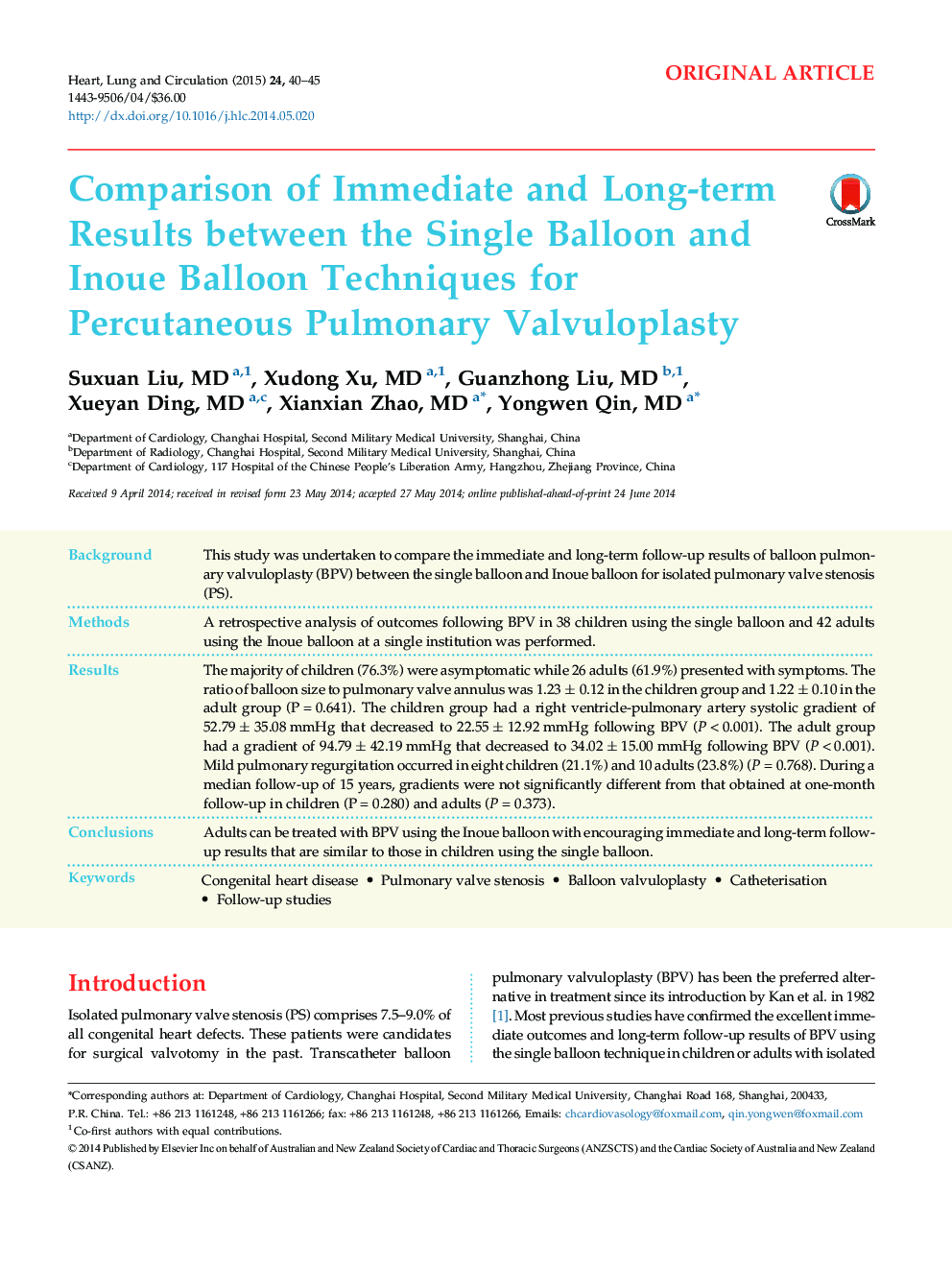| Article ID | Journal | Published Year | Pages | File Type |
|---|---|---|---|---|
| 2918265 | Heart, Lung and Circulation | 2015 | 6 Pages |
BackgroundThis study was undertaken to compare the immediate and long-term follow-up results of balloon pulmonary valvuloplasty (BPV) between the single balloon and Inoue balloon for isolated pulmonary valve stenosis (PS).MethodsA retrospective analysis of outcomes following BPV in 38 children using the single balloon and 42 adults using the Inoue balloon at a single institution was performed.ResultsThe majority of children (76.3%) were asymptomatic while 26 adults (61.9%) presented with symptoms. The ratio of balloon size to pulmonary valve annulus was 1.23 ± 0.12 in the children group and 1.22 ± 0.10 in the adult group (P = 0.641). The children group had a right ventricle-pulmonary artery systolic gradient of 52.79 ± 35.08 mmHg that decreased to 22.55 ± 12.92 mmHg following BPV (P < 0.001). The adult group had a gradient of 94.79 ± 42.19 mmHg that decreased to 34.02 ± 15.00 mmHg following BPV (P < 0.001). Mild pulmonary regurgitation occurred in eight children (21.1%) and 10 adults (23.8%) (P = 0.768). During a median follow-up of 15 years, gradients were not significantly different from that obtained at one-month follow-up in children (P = 0.280) and adults (P = 0.373).ConclusionsAdults can be treated with BPV using the Inoue balloon with encouraging immediate and long-term follow-up results that are similar to those in children using the single balloon.
